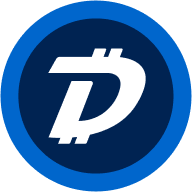aelf (ELF) a apărut ca exemplu de proiect care duce tehnologia blockchain la următorul nivel. Într-un sector care a evoluat rapid de la începuturile sale în urmă cu puțin peste un deceniu, aelf se remarcă prin abordarea sa inovatoare și angajamentul față de îmbunătățirea continuă. Cu o structură stabilă și scalabilă, aelf oferă companiilor platforma ideală pentru a-și construi și opera aplicațiile.
Mai mult, aelf depășește cu mult utilitatea furnizării unui blockchain; acesta oferă o gamă largă de instrumente și resurse pentru a împuternici dezvoltatorii și pentru a promova un ecosistem înfloritor. Această dăruire pentru avansare și implicarea dezvoltatorilor se deosebește în peisajul blockchain în continuă schimbare.
Ce este aelf?
aelf este o rețea inovatoare de tip blockchain open-source, concepută ca o soluție de afaceri cuprinzătoare. Spre deosebire de sistemele blockchain tradiționale, aelf folosește o arhitectură unică constând dintr-un blockchain principal însoțit de mai multe chain-uri laterale. Această structură dă putere dezvoltatorilor și întreprinderilor să creeze și să opereze propriile ecosisteme individuale. Permițând implementarea independentă și folosind aplicații descentralizate (dApp-uri) pe chain-uri laterale separate, aelf realizează izolarea resurselor și eficiența optimă.
Echipa de proiect aelf
Proiectul aelf a fost înființat în 2017 de o echipă de dezvoltatori blockchain calificați și experimentați conduși de Ma Haobo. Obiectivul lor principal a fost să dezvolte o platformă care să răspundă nevoilor dezvoltatorilor, oferindu-le un mediu sigur, scalabil și de înaltă performanță pentru a construi aplicații.
Cum funcționează aelf?
aelf operează pe un cadru tehnologic unic care încorporează un model de procesare paralelă și mecanismul său inovator de consens aelf Delegated Proof of Stake (AEDPoS). La fel ca Delegated Proof of Stake (DPoS), AEDPoS îmbunătățește eficiența și scalabilitatea rețelei.
Ecosistemul aelf este construit pe tehnologia cross-chain, utilizând indexul chain-ului principal și mecanisme de verificare. Acest design inteligent facilitează comunicarea securizată între chain-ul principal și diverse chain-uri laterale, permițând integrarea și interacțiunea perfectă în cadrul rețelei aelf.
ELF: tokenul nativ aelf
Tokenul ELF servește ca și criptomonedă nativă a ecosistemului aelf. Lansat la sfârșitul lui decembrie 2017, tokenul ELF a fost proiectat cu o aprovizionare maximă de 1 miliard, reprezentând aprovizionarea sa totală. În iulie 2023, aproximativ 62,22% din tokenii ELF sunt în circulație, reprezentând 622,19 milioane de unități.
Cazuri de utilizare ELF
Tokenul proiectului, ELF, oferă diverse avantaje. De exemplu, cei care mizează ELF pot deveni noduri și se pot alătura deciziilor de guvernanță. Sistemul de noduri are roluri diferite, cum ar fi nodurile de producție, nodurile candidate și alegătorii. Acest lucru le permite deținătorilor să participe la vot și să contribuie la alegerile proiectului. Utilizatorii folosesc, de asemenea, ELF pentru a acoperi taxele pentru tranzacții și activități secundare. Mai mult, dezvoltatorii pot folosi ELF pentru a cumpăra tokeni de resurse, cum ar fi tokeni speciali care ajută la crearea de proiecte pe platforma aelf.
Distribuția ELF
Distribuția tokenilor ELF este următoarea:
- Douăzeci și cinci de procente au fost alocate fundației, sub rezerva unei perioade de investire de 3 ani.
- Douăzeci și cinci la sută au fost vânduți în timpul vânzării private.
- Șaisprezece procente au fost reținute de echipă, cu o perioadă de atribuire de 2 ani.
- Douăsprezece procente sunt rezervate pentru minare.
- Șapte procente au fost alocate consilierilor, sub rezerva unei perioade de maturizare de 2 ani.
- Șapte la sută au fost alocați în scopuri de marketing.
- Cinci la sută au fost distribuiți comunității prin airdrop-uri.
- Trei procente au fost dedicate finanțării parteneriatelor.
Viitorul ELF
Până acum, ELF a avut succes în abordarea sa de a crea un ecosistem care sprijină eficient dApp-urile. În funcție de ceea ce solicită dezvoltatorii, acest ecosistem este conceput pentru a oferi atât conexiune, cât și separare. La fel ca parachain-urile Polkadot, sidechain-urile aelf permit utilizatorilor să opereze în mediul lor, rămânând conectați la chain-ul principal.
ELF continuă să muncească din greu pentru a se impune în industrie. Actualizarea lor recentă la versiunea mainnet 1.4.1 este un alt pas către acest obiectiv. Această actualizare a îmbunătățit performanța transmisiei de date utilizând fluxul gRPC și comunicarea îmbunătățită în rețeaua nodului prin adăugarea de suport pentru streaming bidirecțional gRPC.



















Rețele sociale